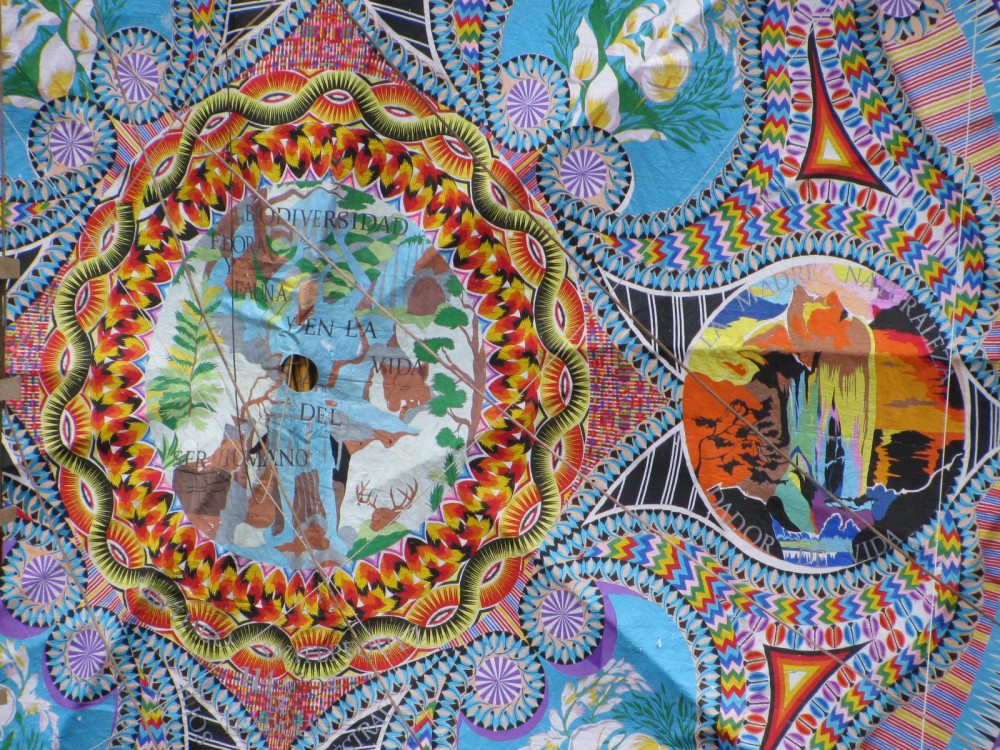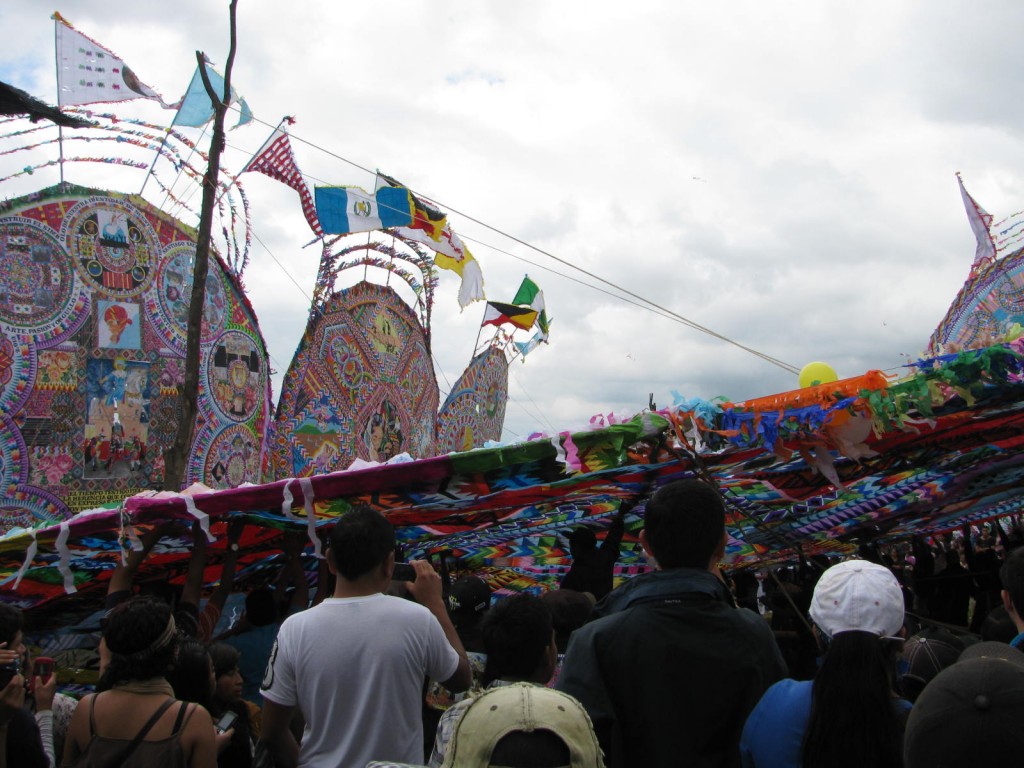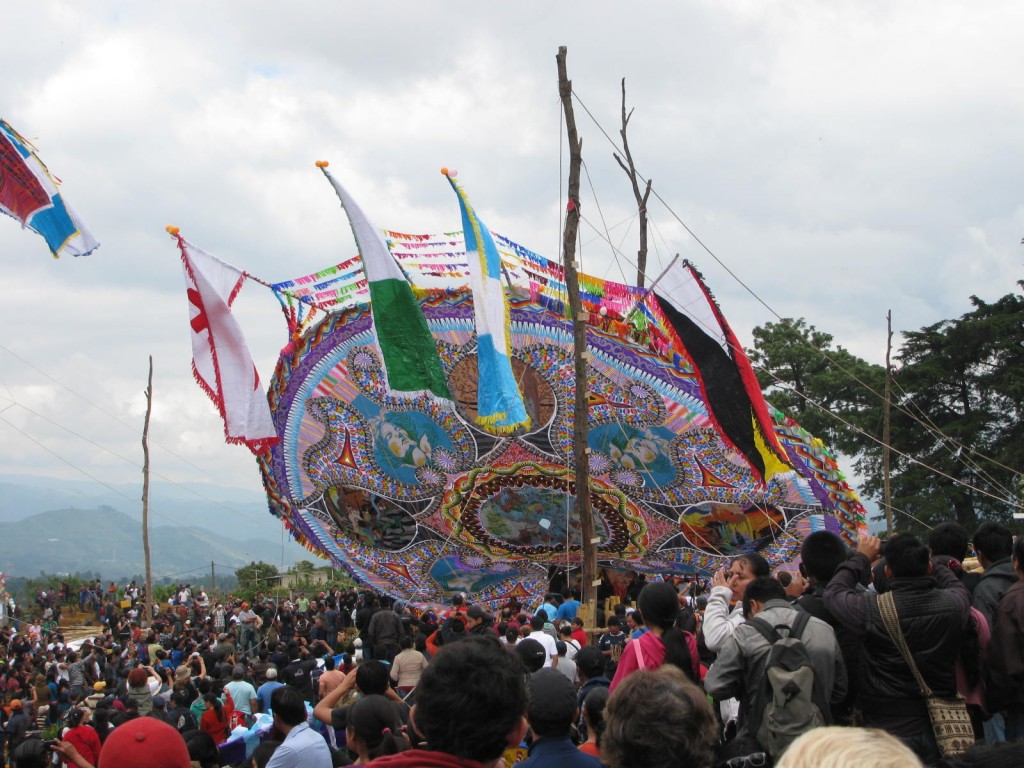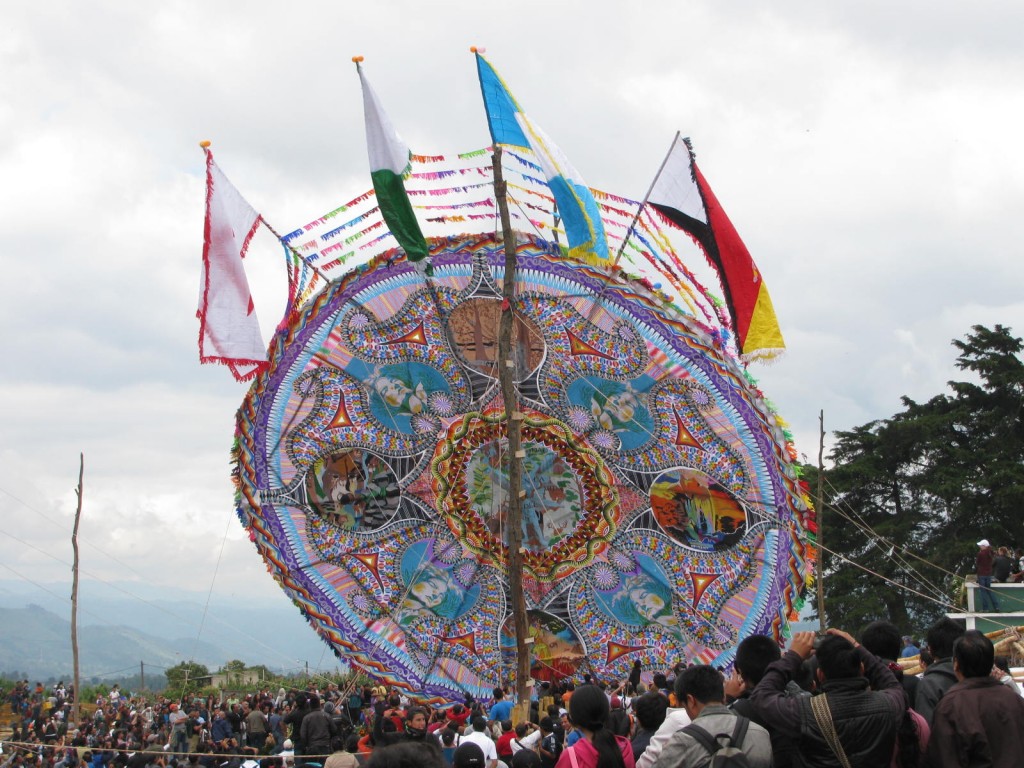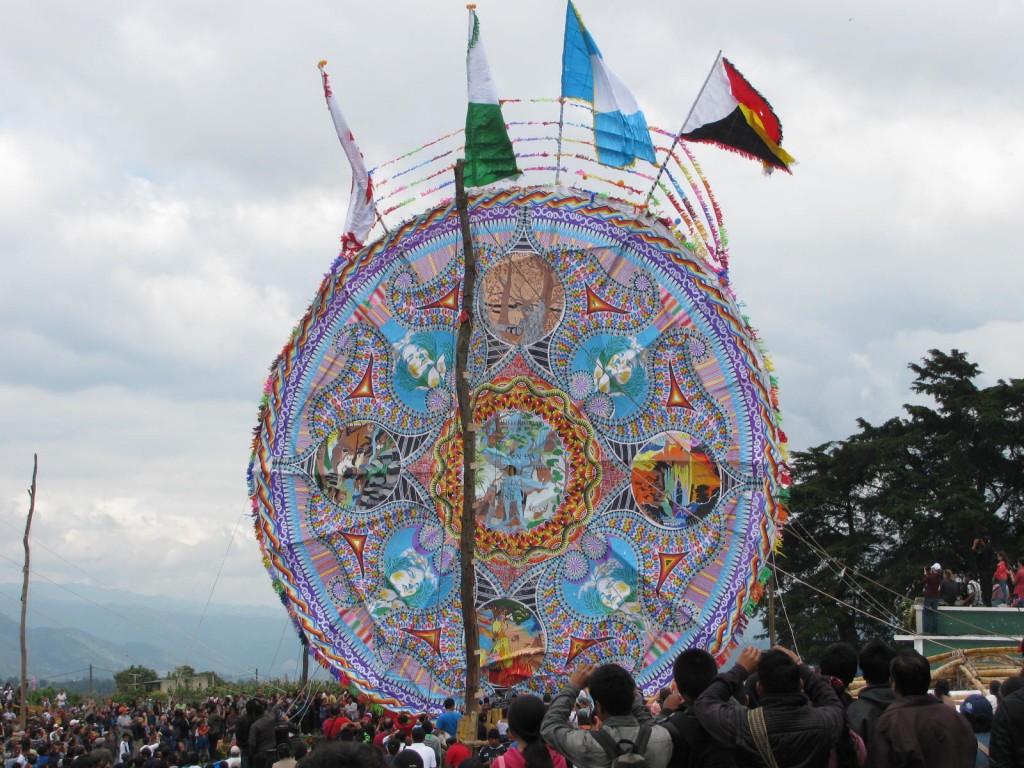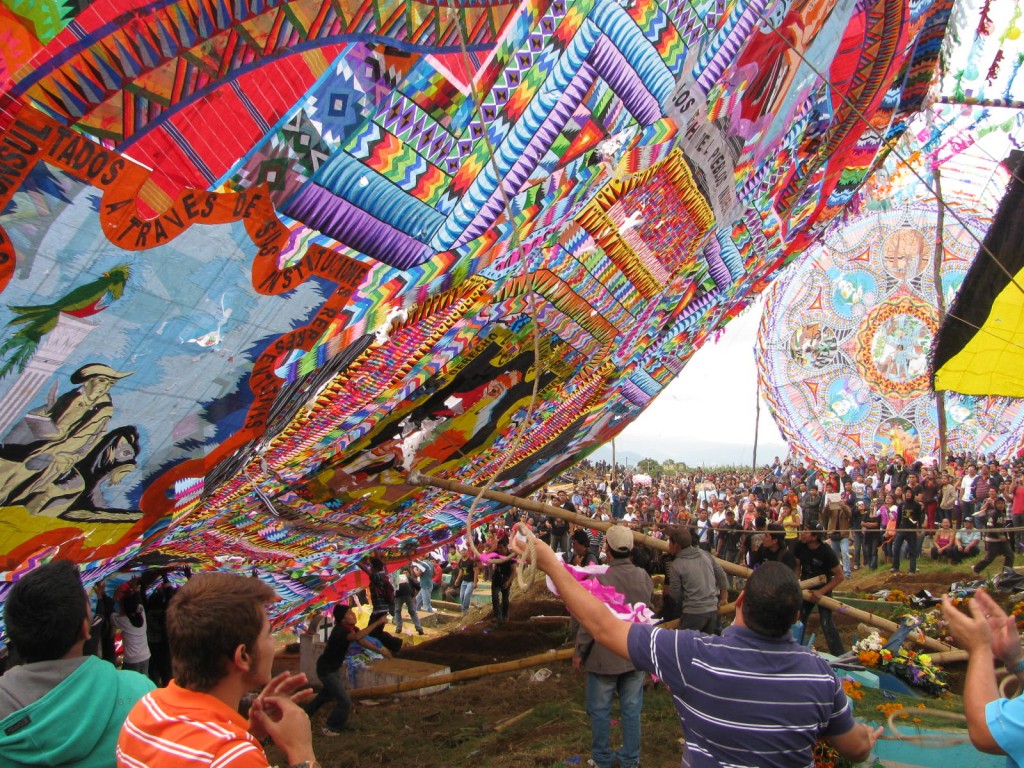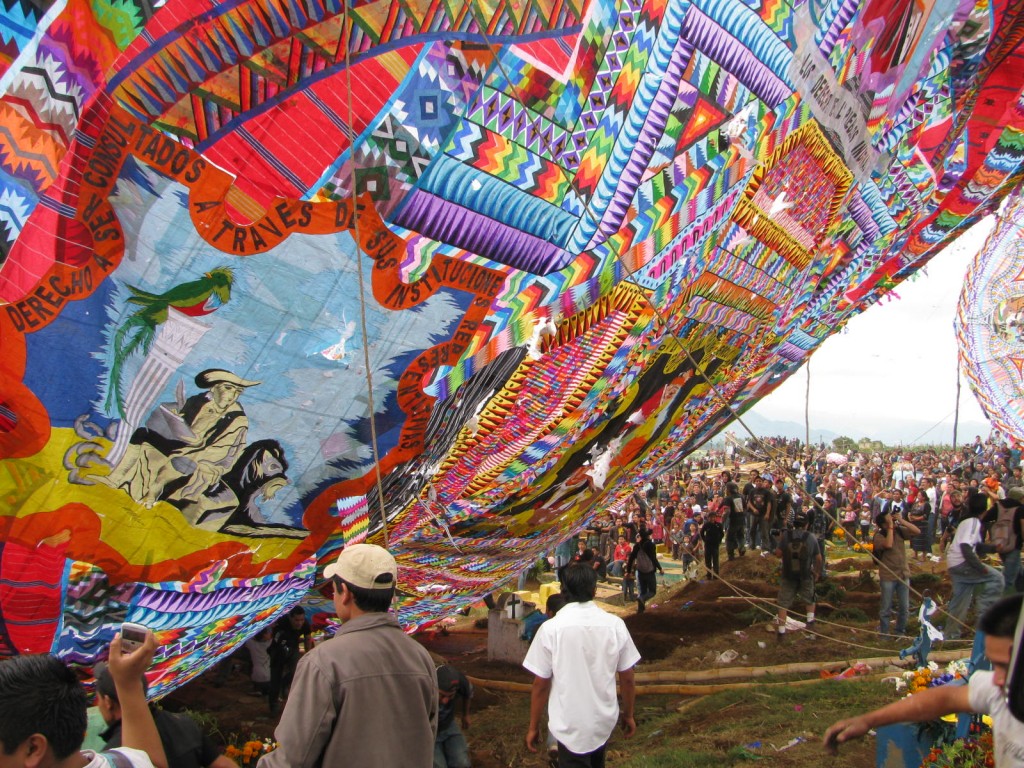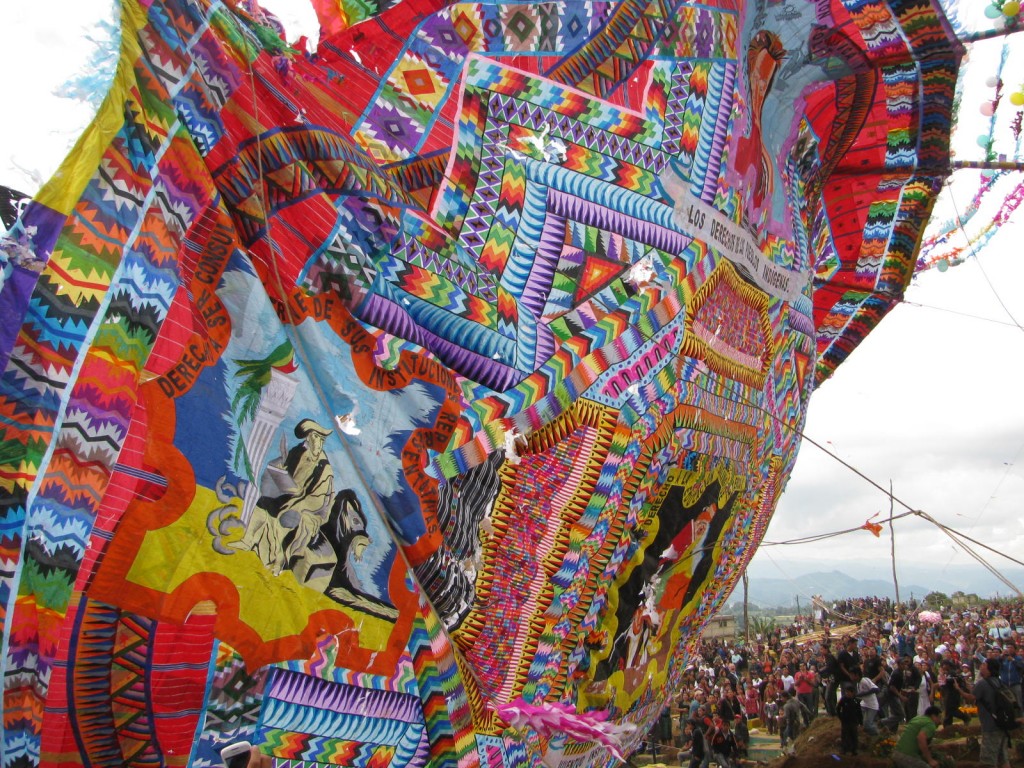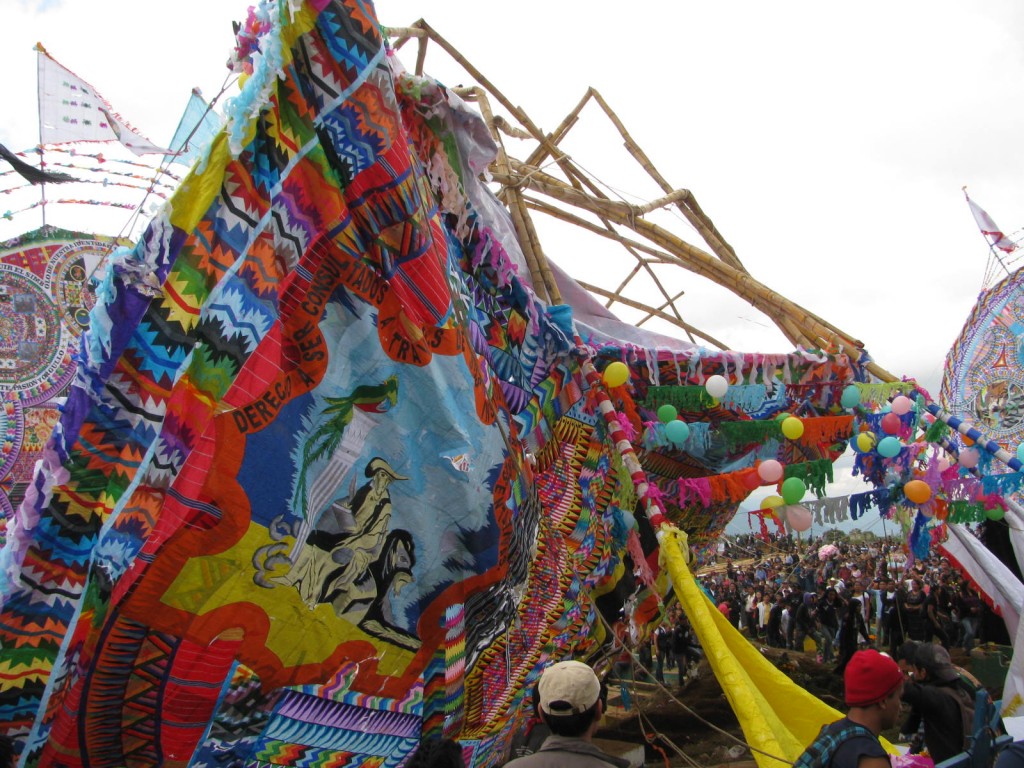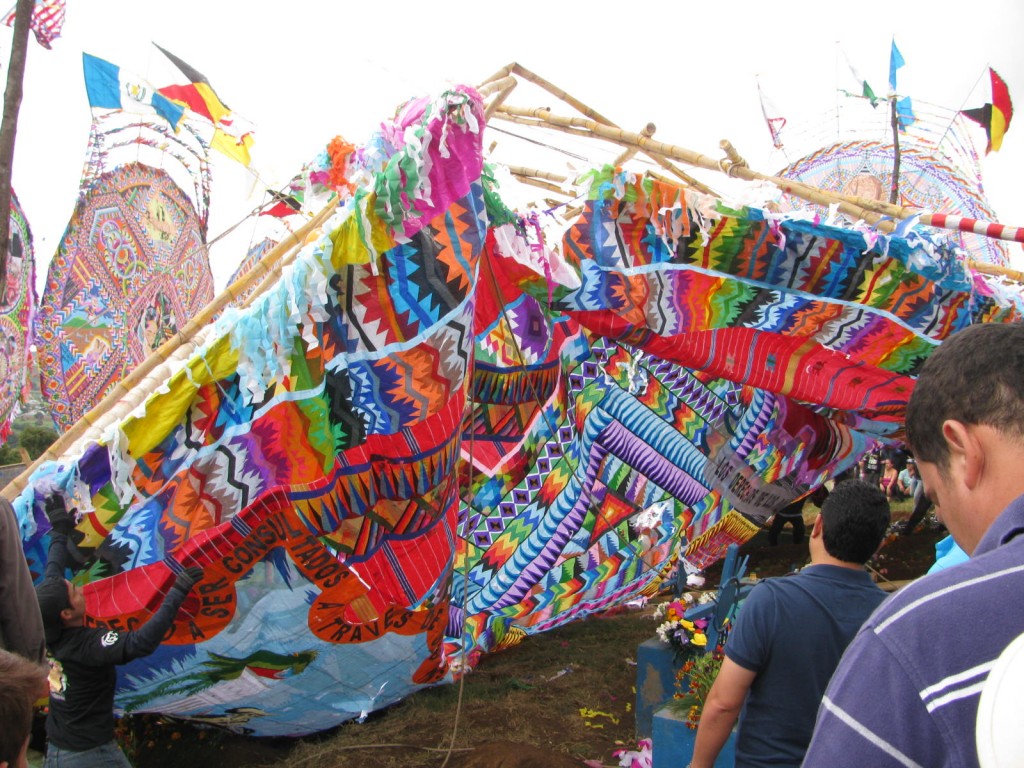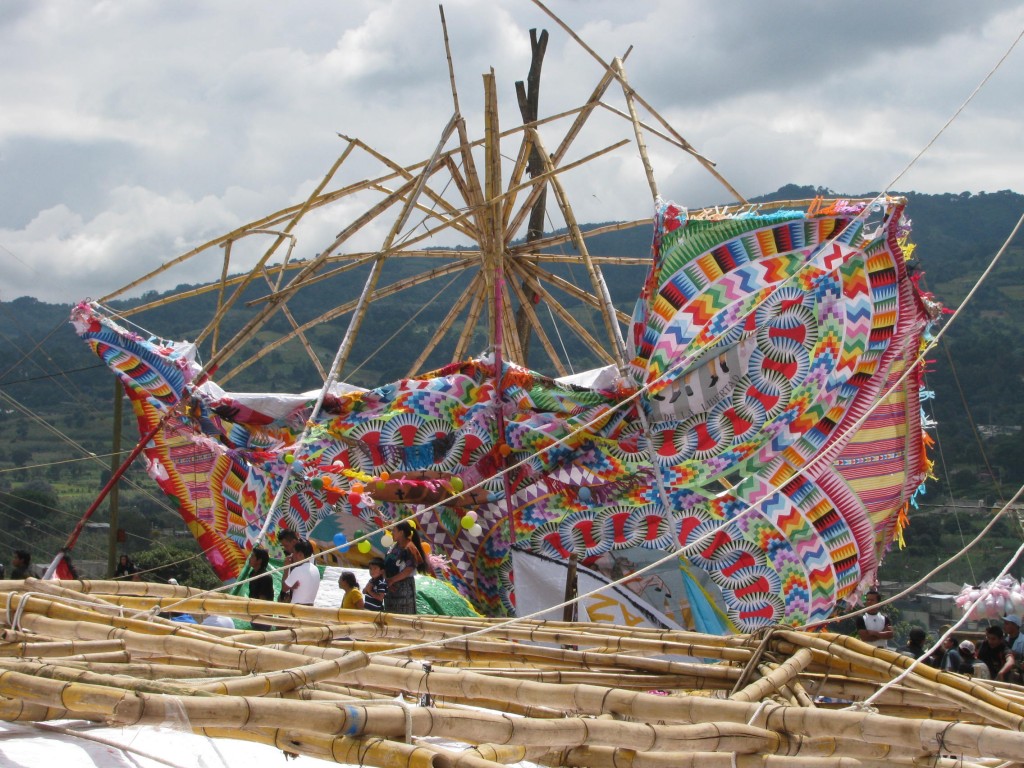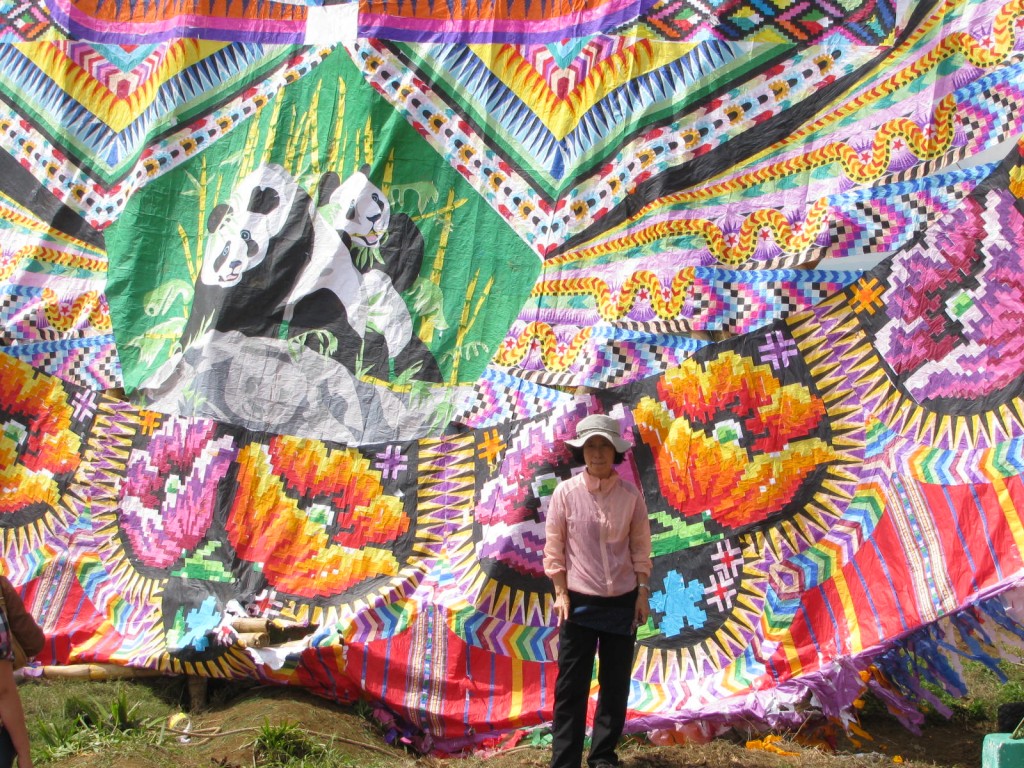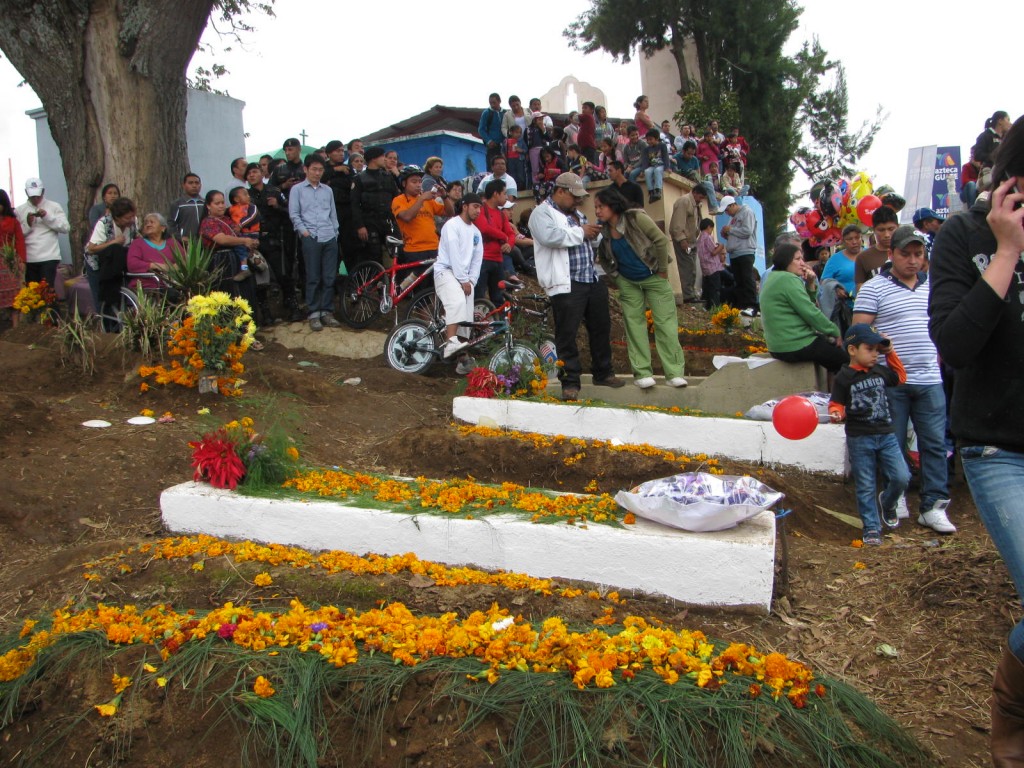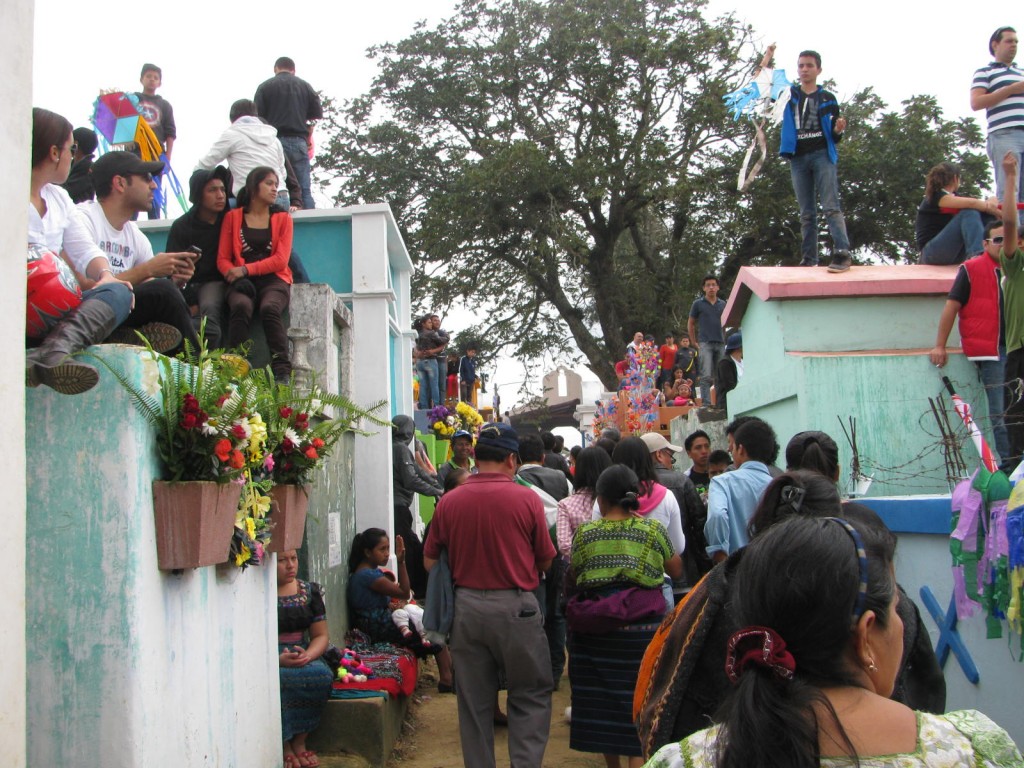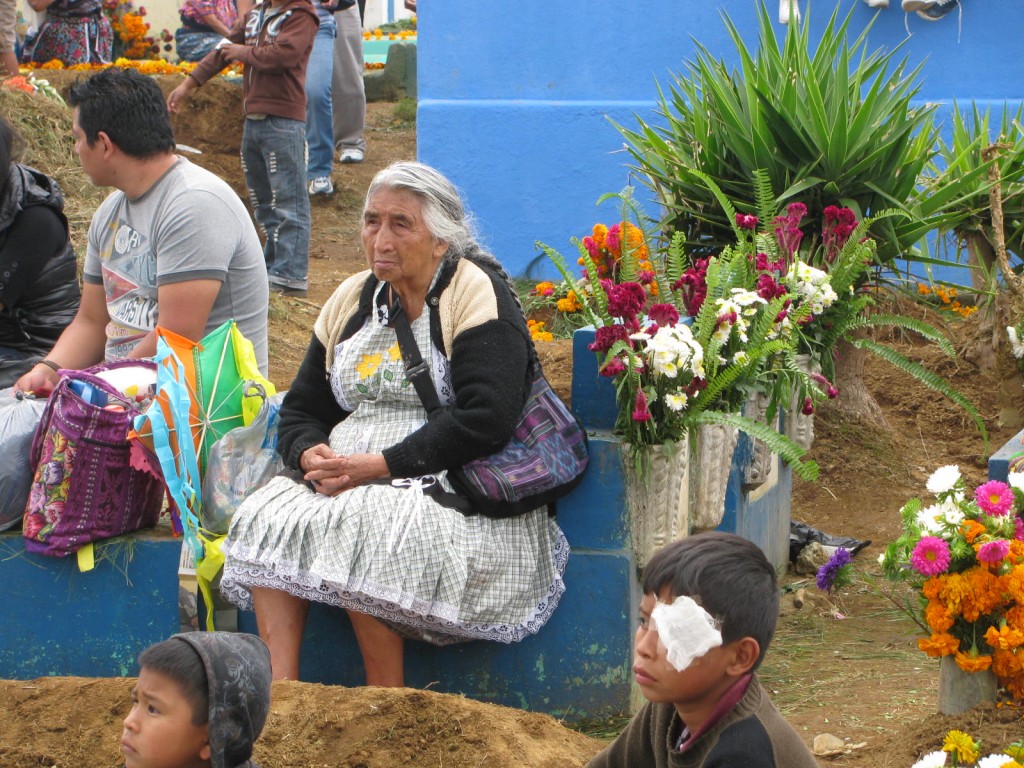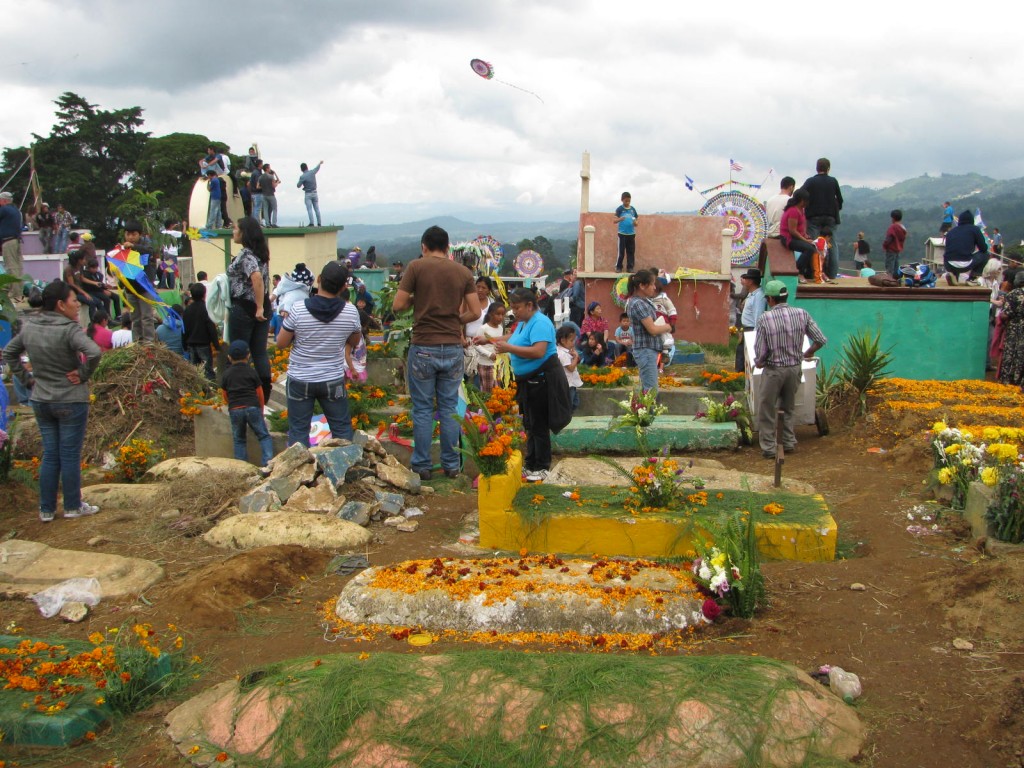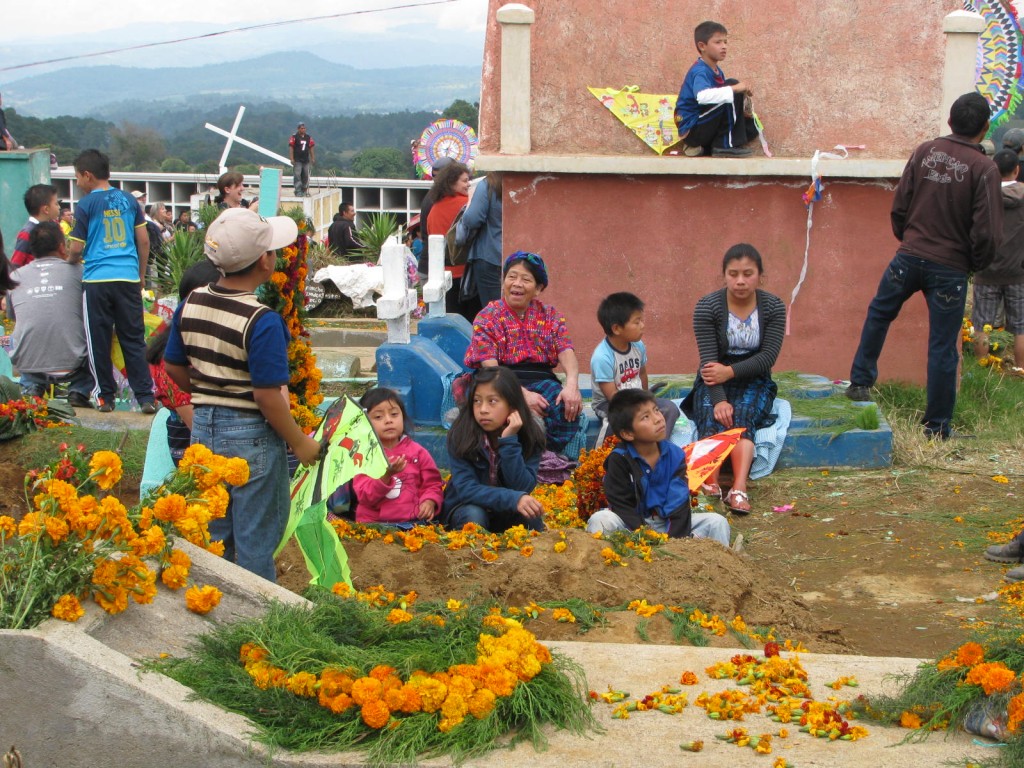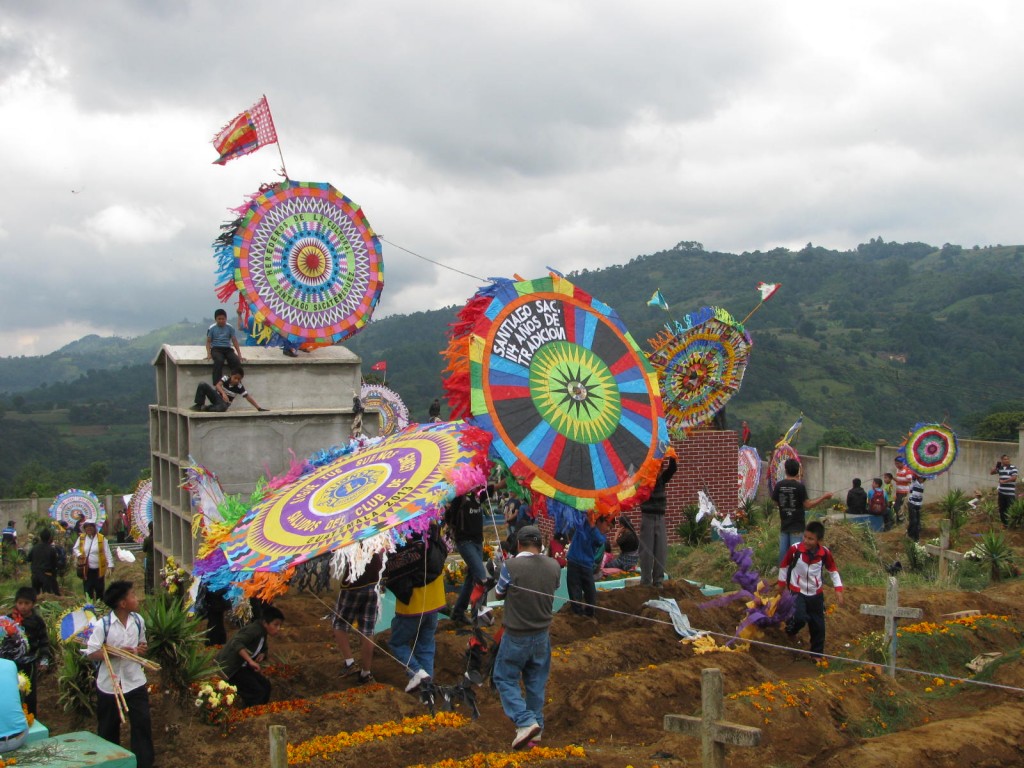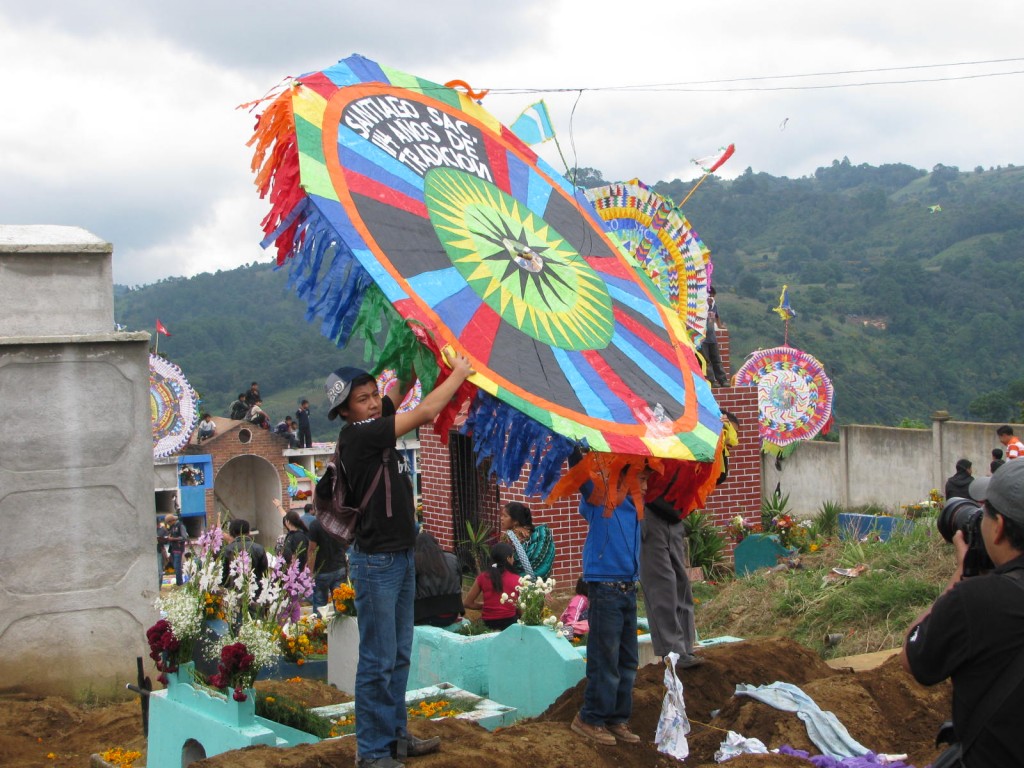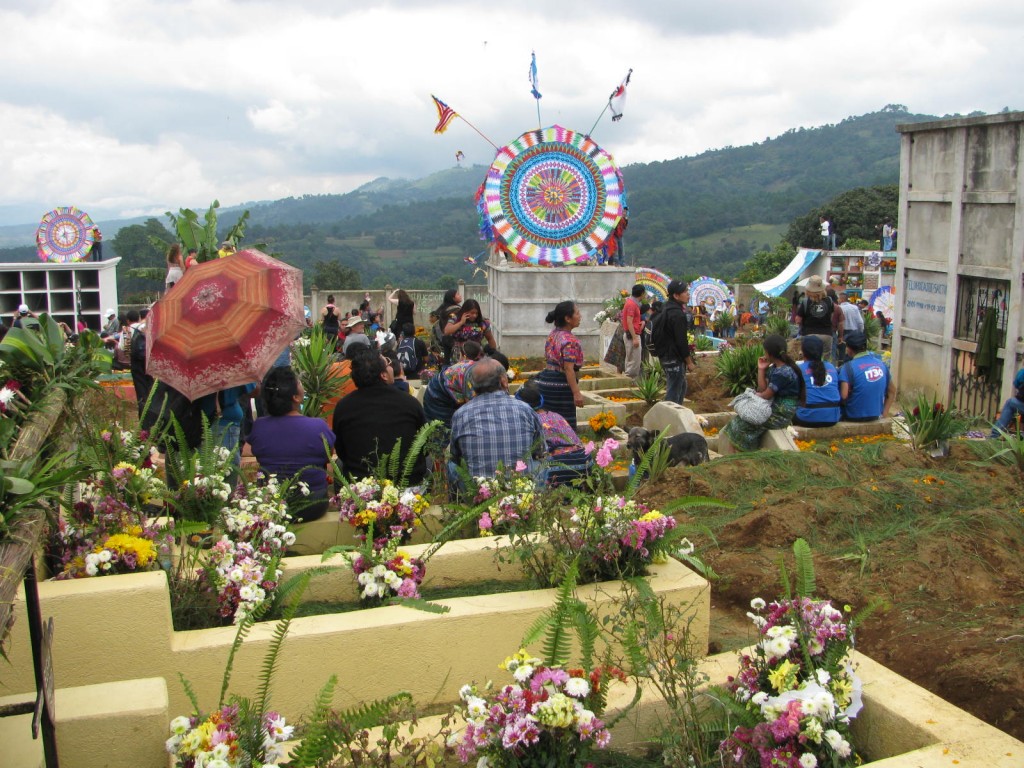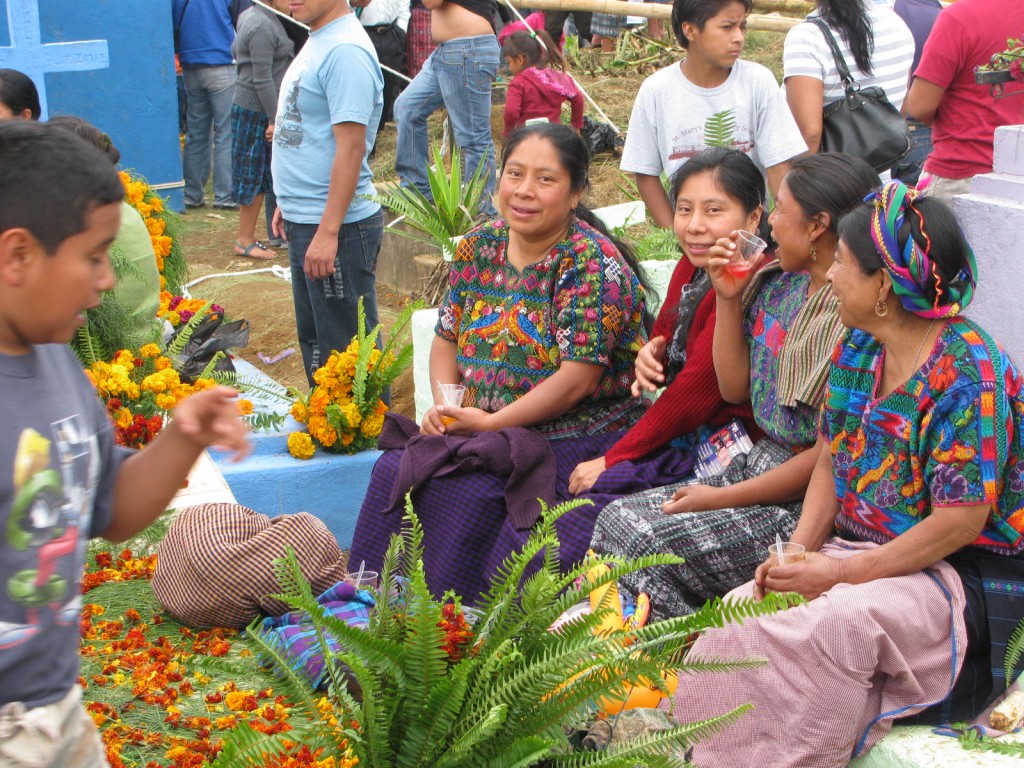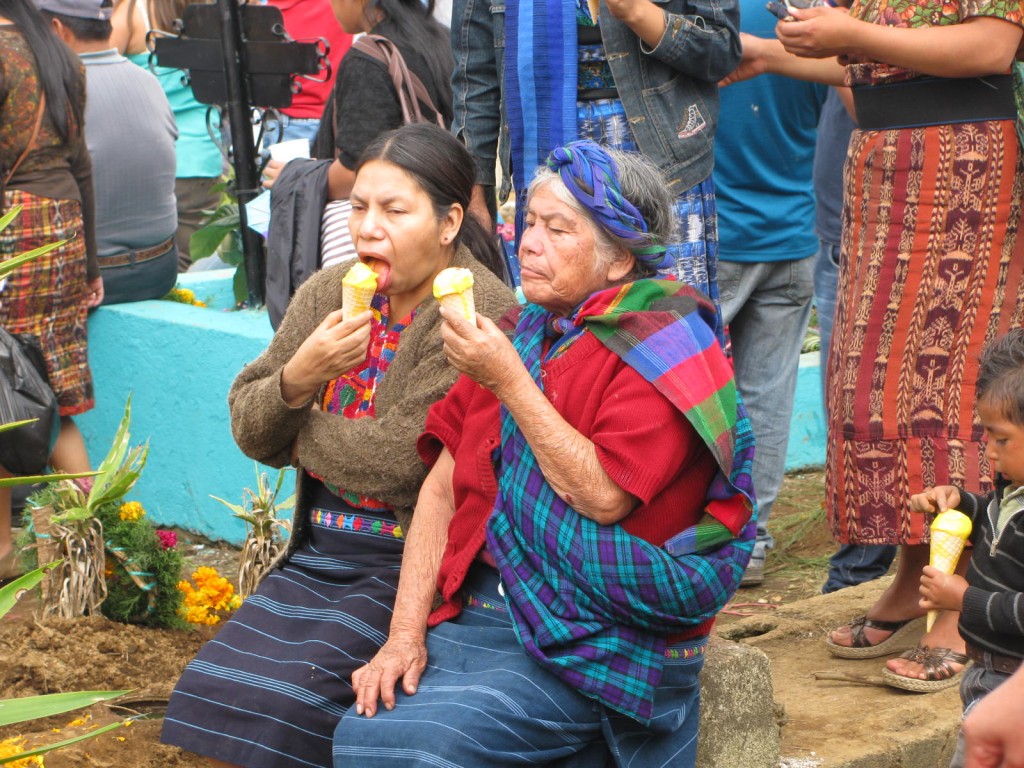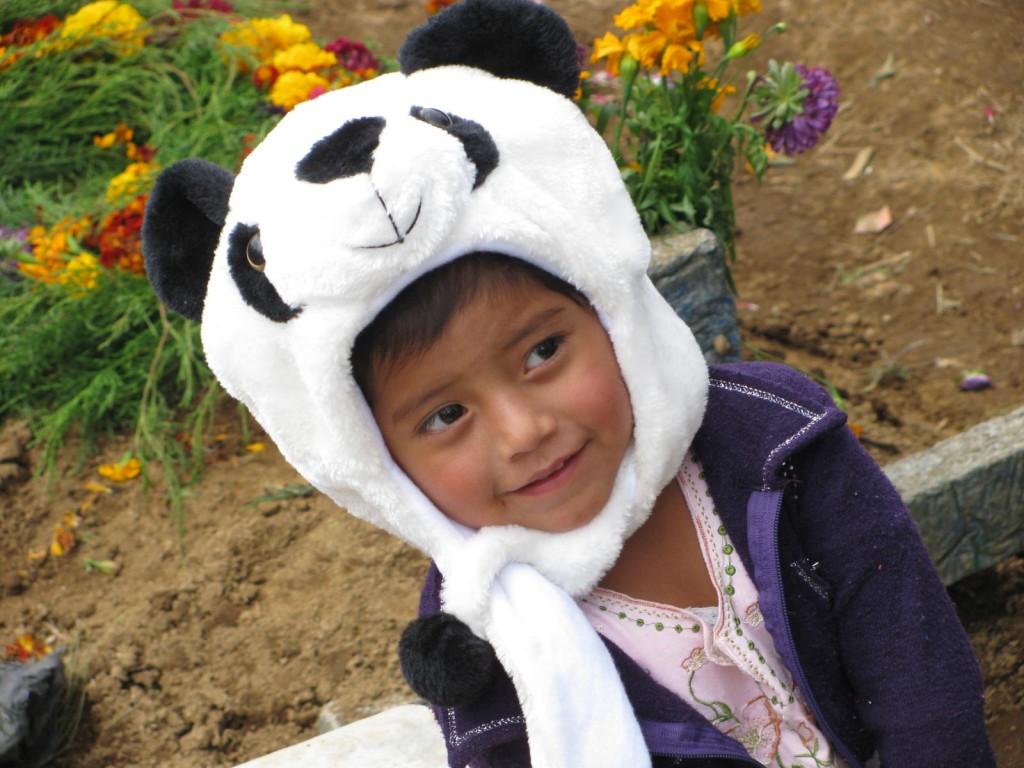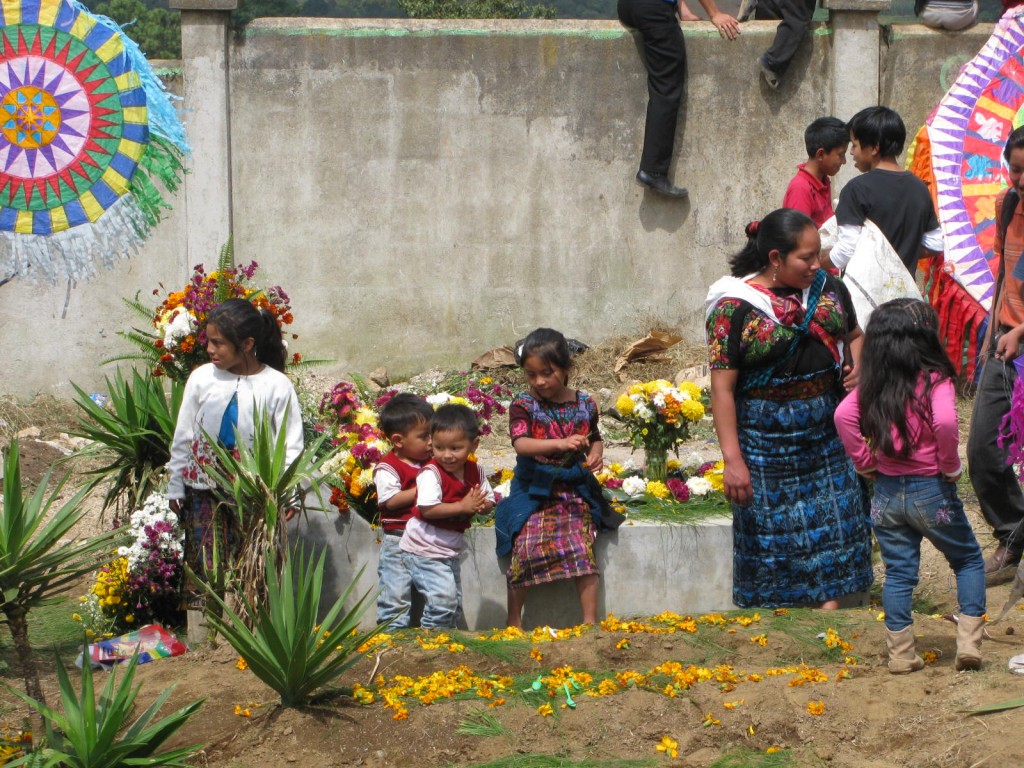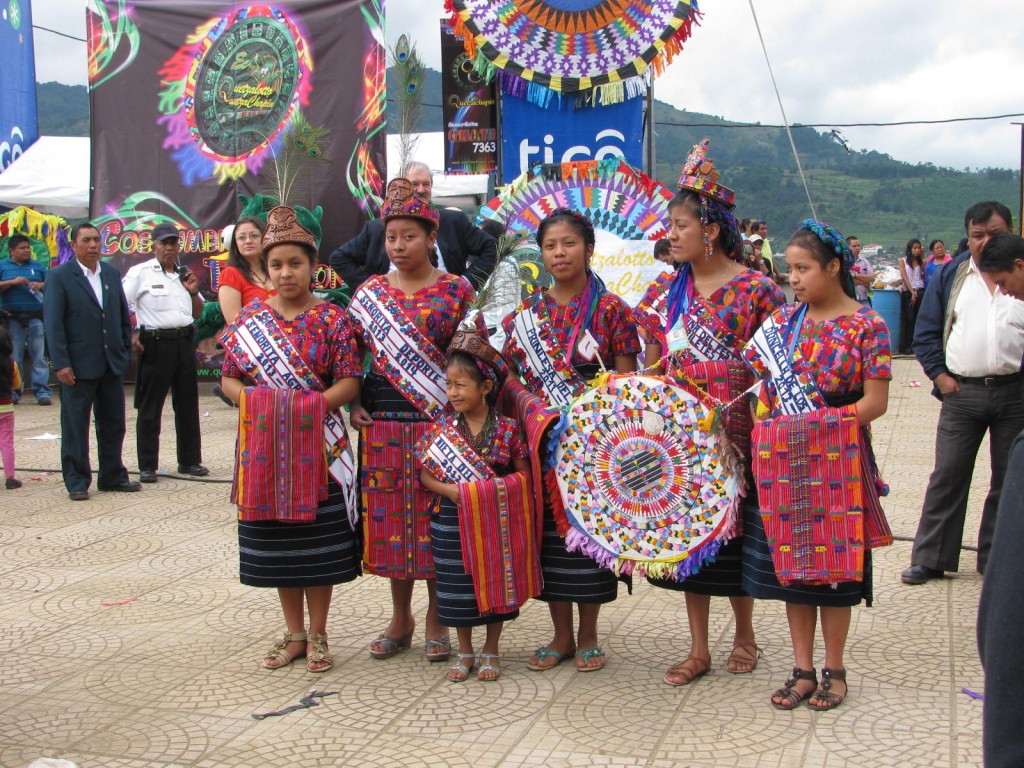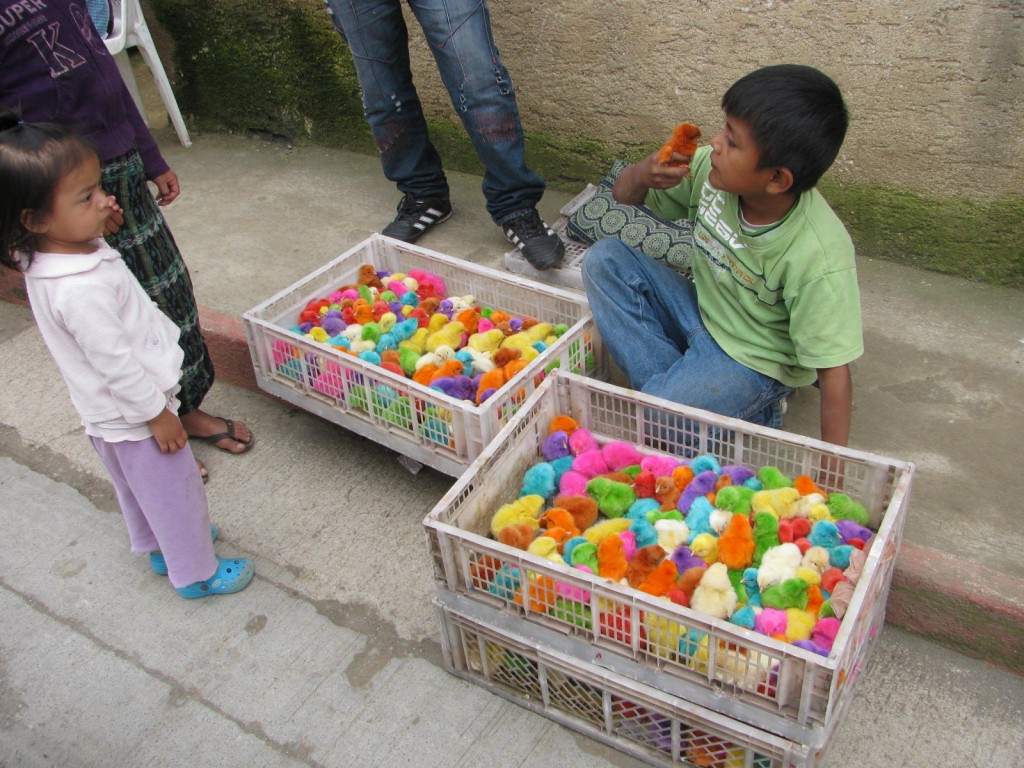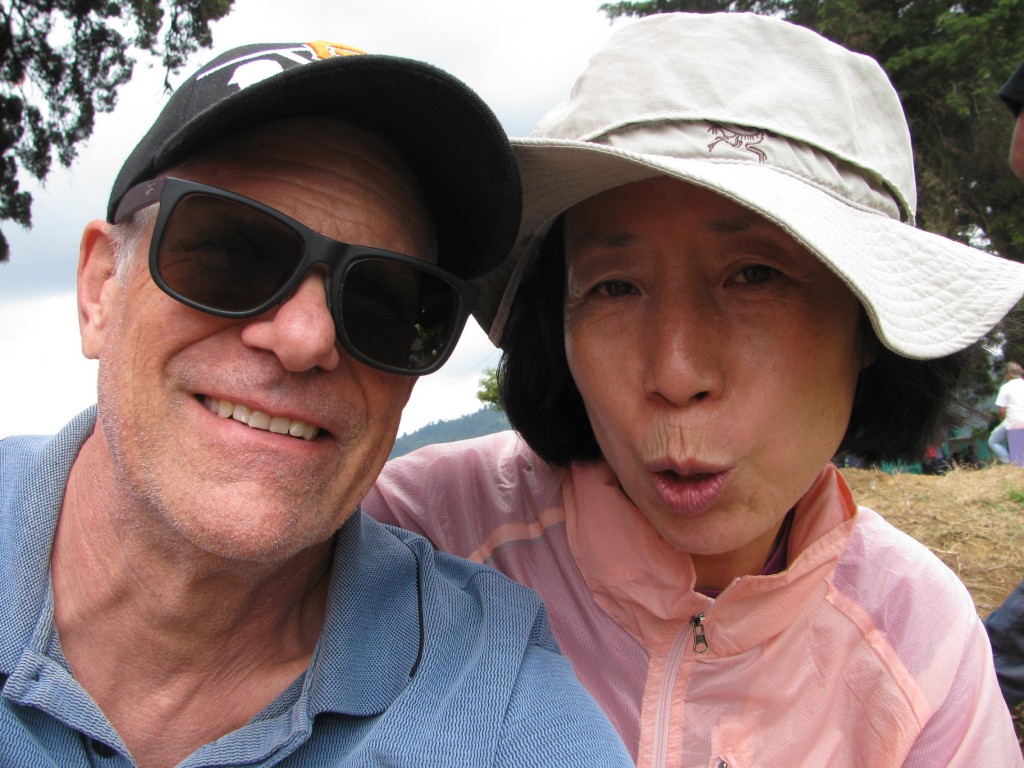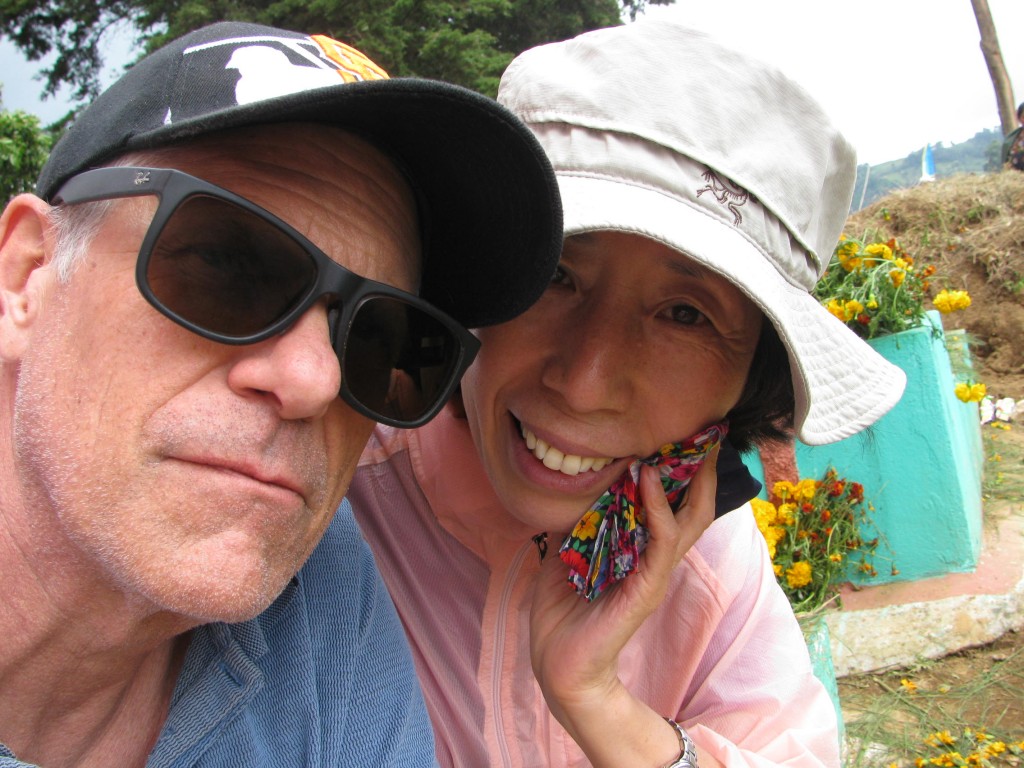Time flies sometimes. I guess we’ve been busy, sort of. We walk around, go to the market, take care of some stuff and, voila’, it’s a week and a hundred pictures later.
Yesterday, we went to the nearby town of Santiago Sacatepeques to see the 114th annual Festival of Giant Kites, which happens on Nov. 1, All Souls Day, the Day of the Dead.
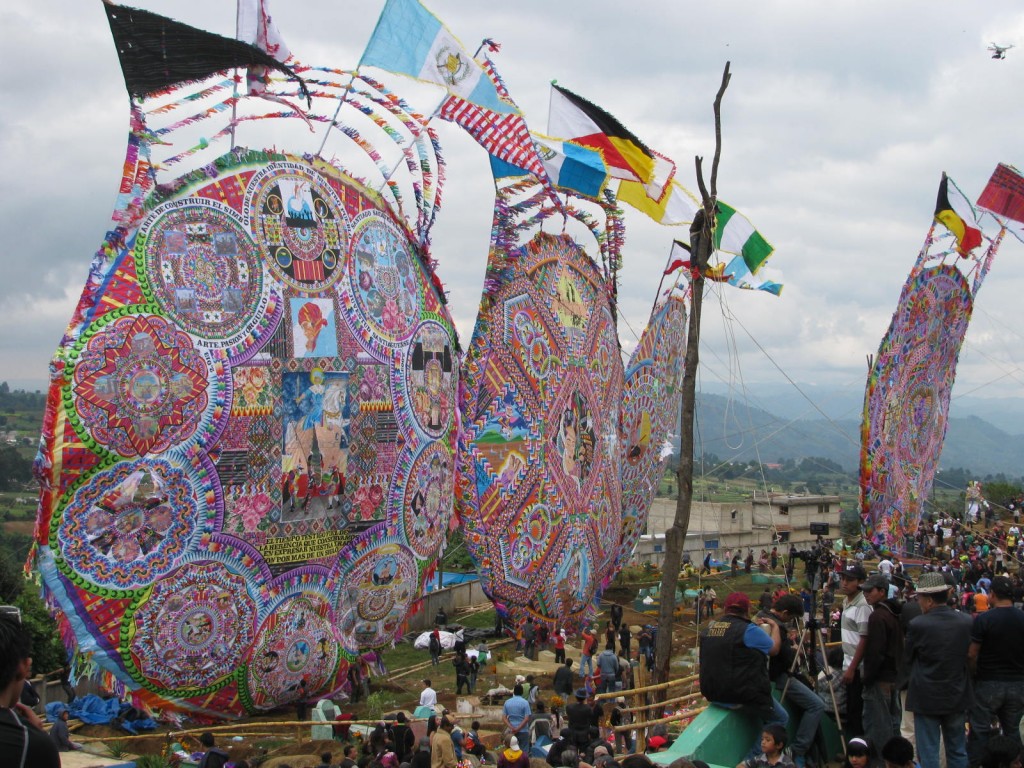 I’m going to lift what all this is about straight from the local what’s happening magazine, Revue.
I’m going to lift what all this is about straight from the local what’s happening magazine, Revue.
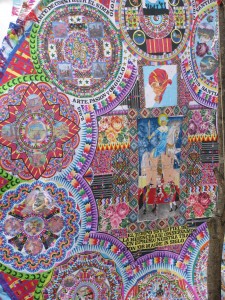 On November 1 and 2, Guatemalan markets are filled with marigolds, chrysanthemums and copal—a pre-Columbian incense made from pine resin. People clean family graves and adorn them with cut tissue paper called papel picado, flowers, and candles. They also honor the dead with festive foods such as candied fruits, tamales, and fiambre (a cold meat and vegetable dish prepared only at this time of year). These dates mark the celebration of El Día de los Difuntos or “the Day of the Dead,” a very important festival throughout Guatemala, especially in the predominantly Kakchiquel town of Santiago Sacatépequez, where a colorful kite-flying ritual takes place.
On November 1 and 2, Guatemalan markets are filled with marigolds, chrysanthemums and copal—a pre-Columbian incense made from pine resin. People clean family graves and adorn them with cut tissue paper called papel picado, flowers, and candles. They also honor the dead with festive foods such as candied fruits, tamales, and fiambre (a cold meat and vegetable dish prepared only at this time of year). These dates mark the celebration of El Día de los Difuntos or “the Day of the Dead,” a very important festival throughout Guatemala, especially in the predominantly Kakchiquel town of Santiago Sacatépequez, where a colorful kite-flying ritual takes place.
Preparations for Day of the Dead begin 40 days before November 1, when youths begin the construction of the kites, a tradition dating back at least 110 years. Customarily, men did most of the work, but today women join them in creating the intricately designed kites, which may have political, religious, or cultural themes. There is now a female kite-making contingency in Sacatepéquez that competes in the annual kite-making competitions.
Before the kites can be made, the unmarried men of the village travel to the coast to hunt for bamboo for the frames. In the eyes of the town, this journey marks males’ passage from boys to men. The trip to the coast is difficult and the work of cutting the thick bamboo is laborious. They return from the coast to find the townspeople awaiting them, eager to hear of their adventures. The bamboo is distributed to the kite-making groups to begin making frames, a process that continues every day until the Day of the Dead.
Women’s role in the celebration has historically been less public than that of men, but crucial. They participate in the measurement, design, and construction of the kites, prepare the glue ingredients and kite materials, and help decide on colors and designs. Women also do the bulk of the festival food preparation, as well as the decorating of churches and public squares.
All kite materials are natural. The glue is made from yucca flour mixed with pieces of lemon peel and water. Ropes used for kite strings are made from maguey, the plant from which tequila is extracted. Kite tails are made from woven cloth (to which people often attach hand-written messages to the spirits). Woven stalks of castilla, a plant similar to wheat, form the frames of smaller kites, while the largest frames are made from bamboo.
At this point let me say that the giant kites are not entirely natural. The frames are bamboo, but most of the ropes are nylon and the patchwork is taped together with probably a couple hundred meters of packing tape. That said, an enormous amount of effort was made to put these, which are basically giant quilts, together.
The kit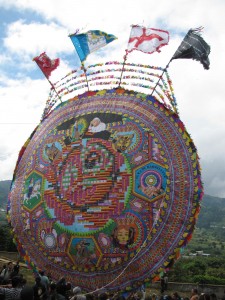 es display three main styles: “Crown” kites measure from three to five meters in diameter and have a circular frame around an empty center, like a donut. The inner and outer circles are connected with four bamboo stalks.
es display three main styles: “Crown” kites measure from three to five meters in diameter and have a circular frame around an empty center, like a donut. The inner and outer circles are connected with four bamboo stalks.
On November 1, people in Santiago begin to fill the cemetery at 4:00 a.m. While cleaning, repainting, and decorating their family tombs, neighbors fondly reminisce about the deceased, and catch up on the latest news. Community bonds are renewed and strengthened as people work side by side, sharing paint, tools, and brushes to refurbish tombs, while they water flowers, pray, and picnic together. It is a happy time.
Here’s a kite being hoisted up.
Young people await a strong wind to raise their giant kites to the skies, beckoning the traveling spirits until 4:00 p.m., when the kites are lowered and the townspeople return home to await the arrival of the souls.
Of course, these kites can’t fly. And unfortunately, the strong wind made raising them successfully sometimes unsuccessful. All that work, and about half of them blew apart as they attempted to get them upright. It made the raising exciting, and sad when it ended badly.
Here it goes, starting at the top. Everybody run!
Back to the Revue text…
People may set up home altars in honor of deceased family members, and relatives and neighbors visit each other to pay their respects. Visitors are offered boiled güisquiles (a green vegetable), sweet corn, and chilacayote (sweet squash), along with chicha, a hot fermented corn beverage.
Eventually, there is a procession through the streets, with residents playing the harp and accordion to the delight of the public. The townspeople travel with the procession from house to house throughout the night, sharing traditional foods and alcohol along the way.
At 4:00 a.m. on November 2, the procession moves toward the cemetery with candles. The townspeople raise the giant kites one last time to guide the spirits back to heaven. Later that evening, kites torn by the winds are burned inside the cemetery, the smoke guiding vagabond spirits to the skies. The surviving kites are exhibited in the local Catholic church during a novena for the deceased, after which they are burned and the ashes buried in the cemetery, completing the annual ritual for the Day of the Dead in Santiago Sacatepéquez.
So, all that is culturally interesting. For the most part, though, this appears to be mostly a secular event. A popular theme on the giant kites was to have foreign flags. America was popular on some of the littler kites that actually can fly.
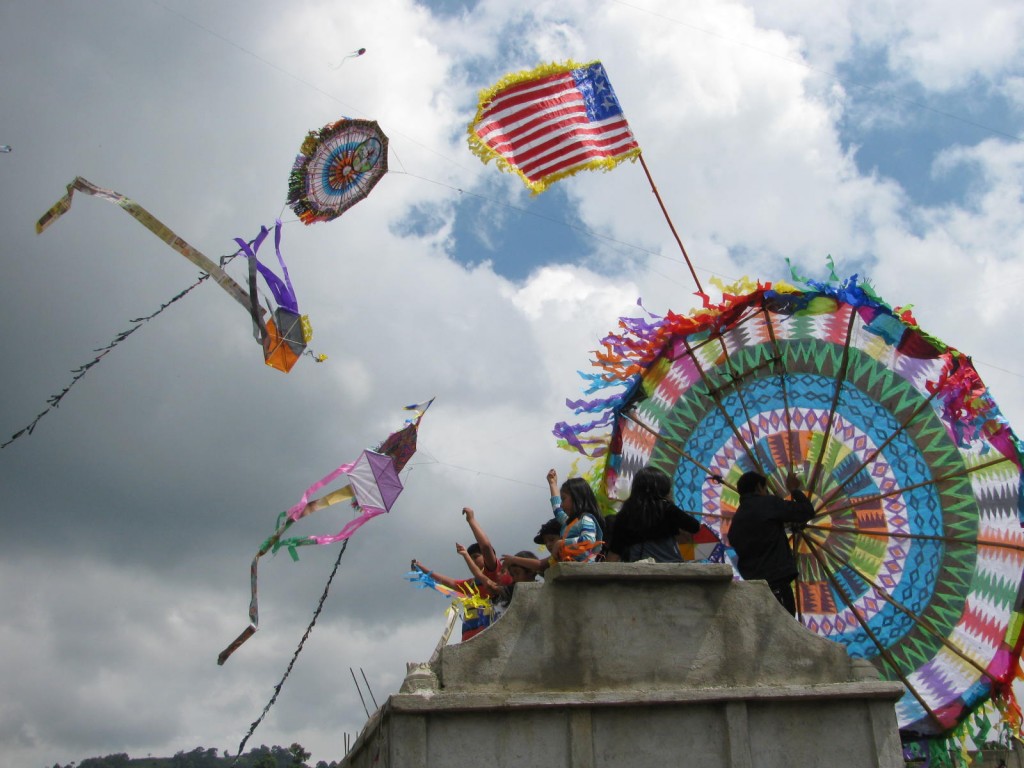
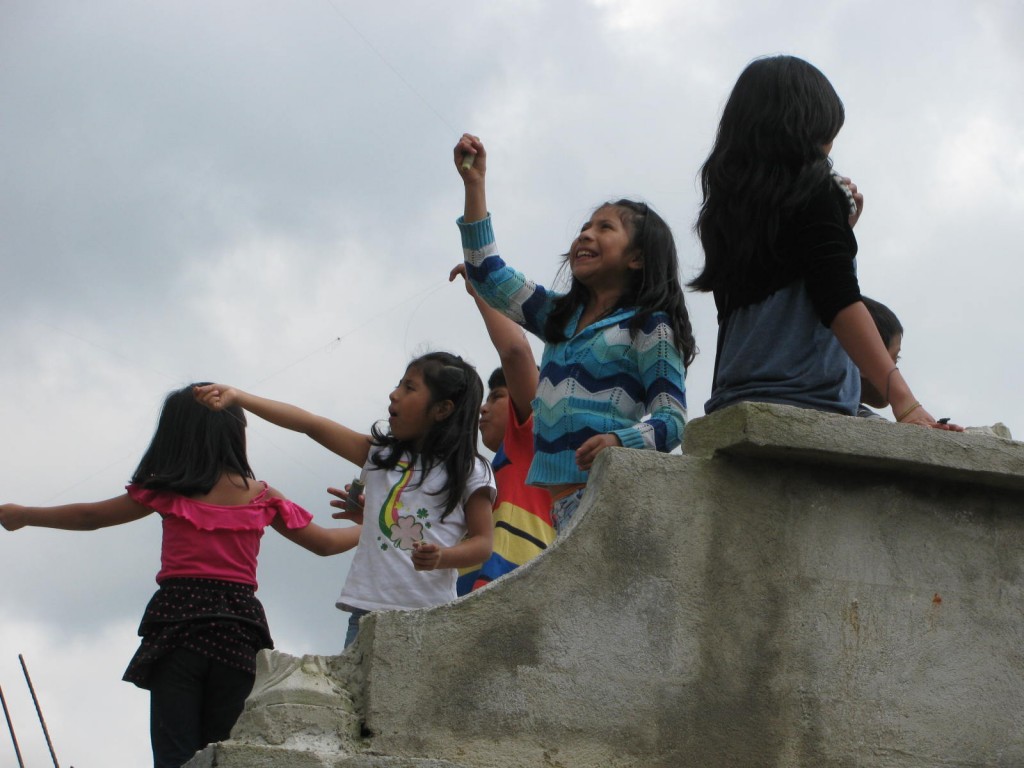 Here are cute pandas on a vaguely Chinese-themed giant kite.
Here are cute pandas on a vaguely Chinese-themed giant kite.
Fittingly, I guess, this traditionally religious event on All Souls Day is held at the town cemetery. To me, it seemed possible disrespectful for thousands of people to walk all over the graves, throwing their beer cans and food waste all around. For them, I guess it isn’t so. Maybe the feeling of communing with your dearly departed feels more real if they are included in the party.
So, what you’ll see in the following pictures is the general scene around there. The mounds are graves and the monuments are funerary, and the people are having a good time partying and flying every kind of kite. Some of the littler kites were made the old-fashioned way.
Myung says they used to dye chicks in Korea when she was little.
That’ll do it for now. Likely, I’ll post more in the coming week. Be well, all of you.
Sometimes Myung is SO cute!

